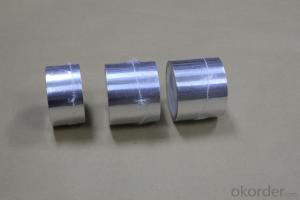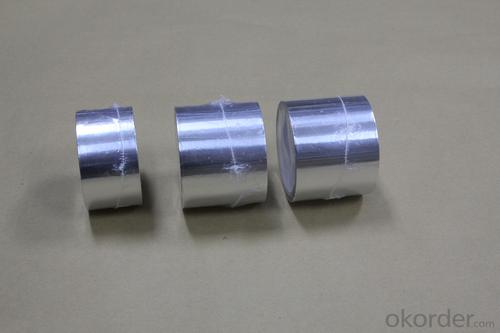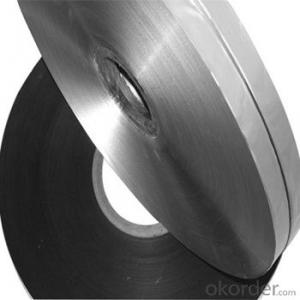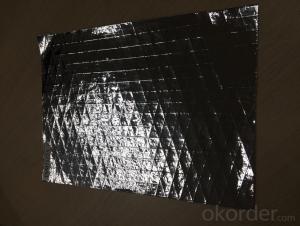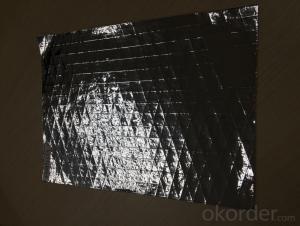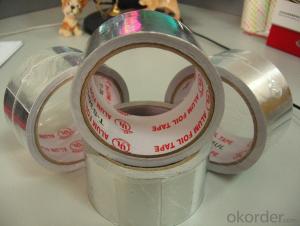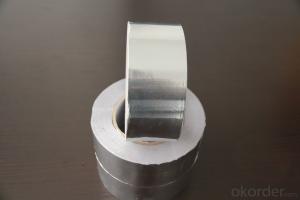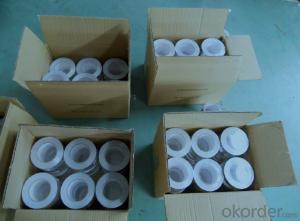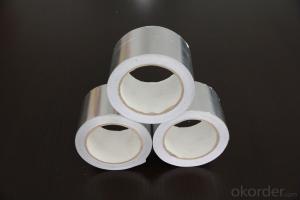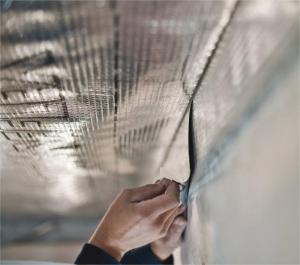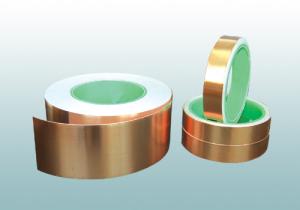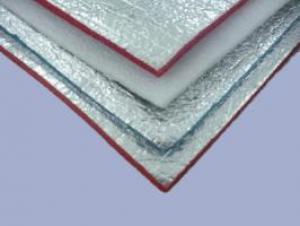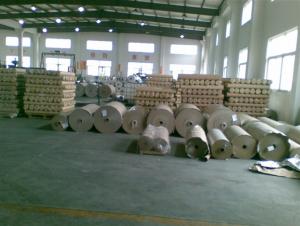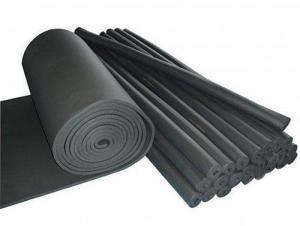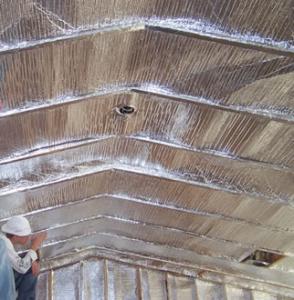Aluminum Foil Facing Self Adhesive Aluminum Foil Tape - T-S3004FR
- Loading Port:
- Shanghai
- Payment Terms:
- TT OR LC
- Min Order Qty:
- 100 roll
- Supply Capability:
- 100000 roll/month
OKorder Service Pledge
OKorder Financial Service
You Might Also Like
1. Description of Aluminum Foil Tape for Refrigerator and Air Conditioning
Aluminum Foil Tape is made of aluminum foil as backing material which single coated with acrylic adhesive of excellent tackiness and adhesive layer is covered with a protective silicon paper as release liner. Aluminum Foil Tape has excellent resistance against chemical corrosions due to the protection of a thin layer of aluminum oxide which coated on the surface of aluminum foil carrier.
2. Features of Aluminum Foil Tape for Refrigerator and Air Conditioning
l Aluminum foil surface is well prepared for efficient wetting, bonding and adhesion durability
l Excellent flame resistance, outdoor weathering as well as good ultra-violet light (UV) resistance
l Good thermal conduction and light reflection due to silvery chemical elements in aluminum foil
l Water-proof carrier has excellent ability as protective equipment against vapor, dust and rusting
3. Image of Aluminum Foil Tape for Refrigerator and Air Conditioning
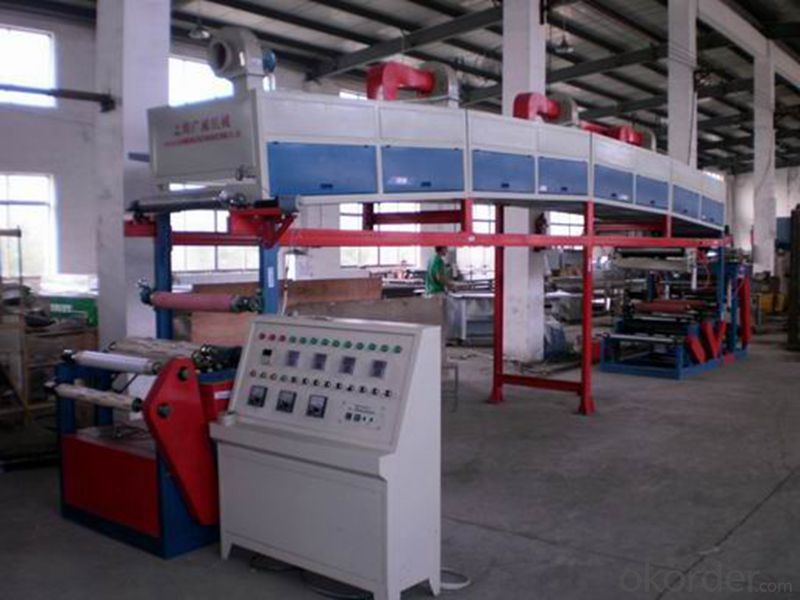
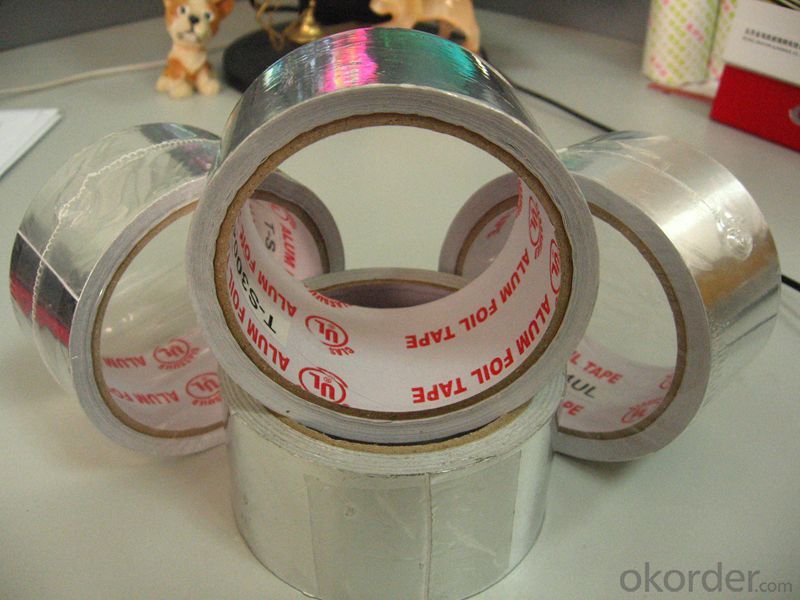
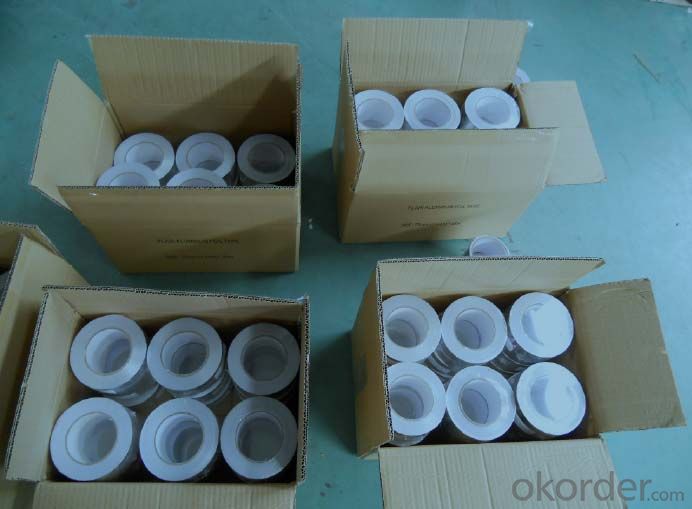
4. Specification of Aluminum Foil Tape for Refrigerator and Air Conditioning
Property | Unit | Value | Test Method |
Backing Thickness | Micron | 30 | PSTC-33 / ASTM D3652 |
Peel Adhesion | N/25mm | 20 | PSTC-1 / ASTM D3330 |
Tack Rolling Ball | cm | 20 | PSTC-6 / ASTM D3121 |
Tensile Strength | N/25mm | 37.5 | PSTC-31 / ASTM D3759 |
Elongation | % | 3.0 | PSTC-31 / ASTM D3759 |
Service Temperature | °C | -20 ~ +120 | ---------- |
Applying Temperature | °C | +10 ~ +40 | ---------- |
FAQ
①How to guarantee the quality of the products?
We have established the international advanced quality management system,every link from raw material to final product we have strict quality test; We resolutely put an end to unqualified products flowing into the market. At the same time, we will provide necessary follow-up service assurance.
②How long can we receive the product after purchase?
In the purchase of product within 10 working days, we will arrange the factory delivery as soon as possible. The specific time of receiving is related to the state and position of customers. Commonly 20 to 25 working days can be served.
③What is the storage condition?
The welded wire mesh should be stored at room temperature and kept from wet and heat source.
- Q: Is it possible to replace plastic wrap with aluminum foil for food storage or packaging purposes?
- <p>While aluminum foil facing can be used in some instances for food storage or packaging, it is not a direct substitute for plastic wrap. Aluminum foil is more durable and heat resistant, making it suitable for covering dishes or wrapping food for cooking or freezing. However, it is not as clingy or airtight as plastic wrap, which can be crucial for preserving freshness and preventing cross-contamination. Additionally, aluminum foil is not microwave-safe, unlike plastic wrap, which can limit its use in certain food storage applications. For best results, use the appropriate material based on the specific needs of food storage or packaging.</p>
- Q: This question asks for the optimal method of storing aluminum foil to maintain its usability and prevent damage.
- <p>The best way to store aluminum foil is to keep it in a cool, dry place, away from direct sunlight and heat sources. It's advisable to store it in its original box or a resealable plastic container to prevent it from getting crumpled or damaged. Some people prefer to store it with the shiny side facing out for easier identification, while others prefer the dull side out to reduce glare. It's important to ensure that the foil is tightly rolled to prevent it from unraveling or getting tangled.</p>
- Q: What are the options available to replace aluminum foil when covering food?
- <p>Yes, there are several alternatives to aluminum foil for covering food. Silicone food covers are reusable, heat-resistant, and can be easily washed. Beeswax wraps are an eco-friendly option, made from natural materials and can be used multiple times. Parchment paper is a disposable option that's ideal for baking and can be used in place of foil. Reusable glass or ceramic lids can be used for dishes that need to be covered while cooking. Lastly, some people opt for reusable metal mesh covers, which are suitable for grilling and baking. Each alternative has its own benefits and is chosen based on the specific needs and preferences of the user.</p>
- Q: Is it safe and effective to use aluminum foil facing material for wrapping food when preparing for freezing?
- <p>Yes, you can use aluminum foil facing for wrapping food for freezing. Aluminum foil is a good conductor of heat and provides a barrier that helps prevent freezer burn. It is also non-toxic and does not impart any taste to the food. Ensure the foil is tightly wrapped around the food to maintain its freshness and protect it from air exposure. However, it's important to note that aluminum foil is not microwave-safe, so if you plan to reheat the food, you should transfer it to a microwave-safe container before heating.</p>
- Q: This question asks for methods to clean the surface of aluminum foil facing, which is a type of material used in construction.
- <p>To clean aluminum foil facing, start by removing any loose dirt or debris with a soft brush. Then, use a mild detergent mixed with warm water and a soft cloth to gently wipe the surface. Avoid using abrasive cleaners or scrubbers, as they can damage the foil. For stubborn stains, a mixture of equal parts white vinegar and water can be applied with a cloth, followed by rinsing with clean water. Always let the surface dry completely to prevent water spots or damage.</p>
- Q: Can aluminum foil be shaped into a roasting rack?
- <p>Yes, you can create a makeshift roasting rack using aluminum foil. To do this, take two long sheets of aluminum foil and fold them back and forth to create a series of parallel ridges. These ridges will provide support for your roast while allowing air to circulate underneath. Place the folded foil on a baking sheet, spacing the ridges evenly apart to create a grid-like pattern. Your roast can then be placed on top of this foil 'rack' for cooking. This method is a simple and effective way to elevate your food for better heat distribution and crisping.</p>
- Q: How should aluminum foil be properly stored when not in use to maintain its quality and usability?
- <p>The best ways to store aluminum foil when not in use include keeping it in a cool, dry place away from direct sunlight to prevent degradation. It's advisable to store it in its original box or a resealable plastic container to protect it from moisture and air exposure. Some people also use a paper towel roll as a dispenser by placing the aluminum foil around it, ensuring the shiny side is out for easy access. Keeping it in a drawer is also common, but it's important to prevent it from crumpling or tearing.</p>
- Q: This question asks for a comparison of the benefits and drawbacks associated with the use of aluminum foil facing in various applications.
- <p>Aluminum foil facing offers several advantages, including excellent heat reflection, which can improve insulation and energy efficiency in buildings. It also provides a moisture barrier, which can protect against water damage and mold growth. Additionally, aluminum foil facing is lightweight, easy to install, and resistant to corrosion. However, there are disadvantages such as its limited strength and durability compared to other materials, making it prone to punctures and tears. It can also be less aesthetically pleasing and may require additional protective layers for long-term use. Furthermore, improper disposal can contribute to environmental concerns due to its non-biodegradable nature.</p>
- Q: Is it possible to recycle aluminum foil with a facing layer? If yes, what is the process involved?
- <p>Yes, aluminum foil facing can be recycled. The process typically involves separating the aluminum from the facing material. This is done by specialized recycling facilities that use methods such as shredding, washing, and magnetic separation to remove impurities. The aluminum is then melted down and repurposed into new products. It's important to check local recycling guidelines, as some facilities may not accept foil with a facing layer due to the difficulty in separation or the presence of non-recyclable components.</p>
- Q: Is it possible to use aluminum foil as a baking surface? If yes, what kinds of foods are suitable for baking with aluminum foil?
- <p>Yes, aluminum foil can be used for baking. It's particularly useful for foods that require even heat distribution or need to be shielded from direct heat, such as delicate pastries, fish, or vegetables. It can also be used to prevent food from sticking to the baking sheet or to catch any drips, making cleanup easier. However, it's important to note that some foods, especially those with a high sugar content, can burn if they come into direct contact with the foil, so it's best to use it with a light layer of oil or parchment paper underneath.</p>
Send your message to us
Aluminum Foil Facing Self Adhesive Aluminum Foil Tape - T-S3004FR
- Loading Port:
- Shanghai
- Payment Terms:
- TT OR LC
- Min Order Qty:
- 100 roll
- Supply Capability:
- 100000 roll/month
OKorder Service Pledge
OKorder Financial Service
Similar products
Hot products
Hot Searches
Related keywords
